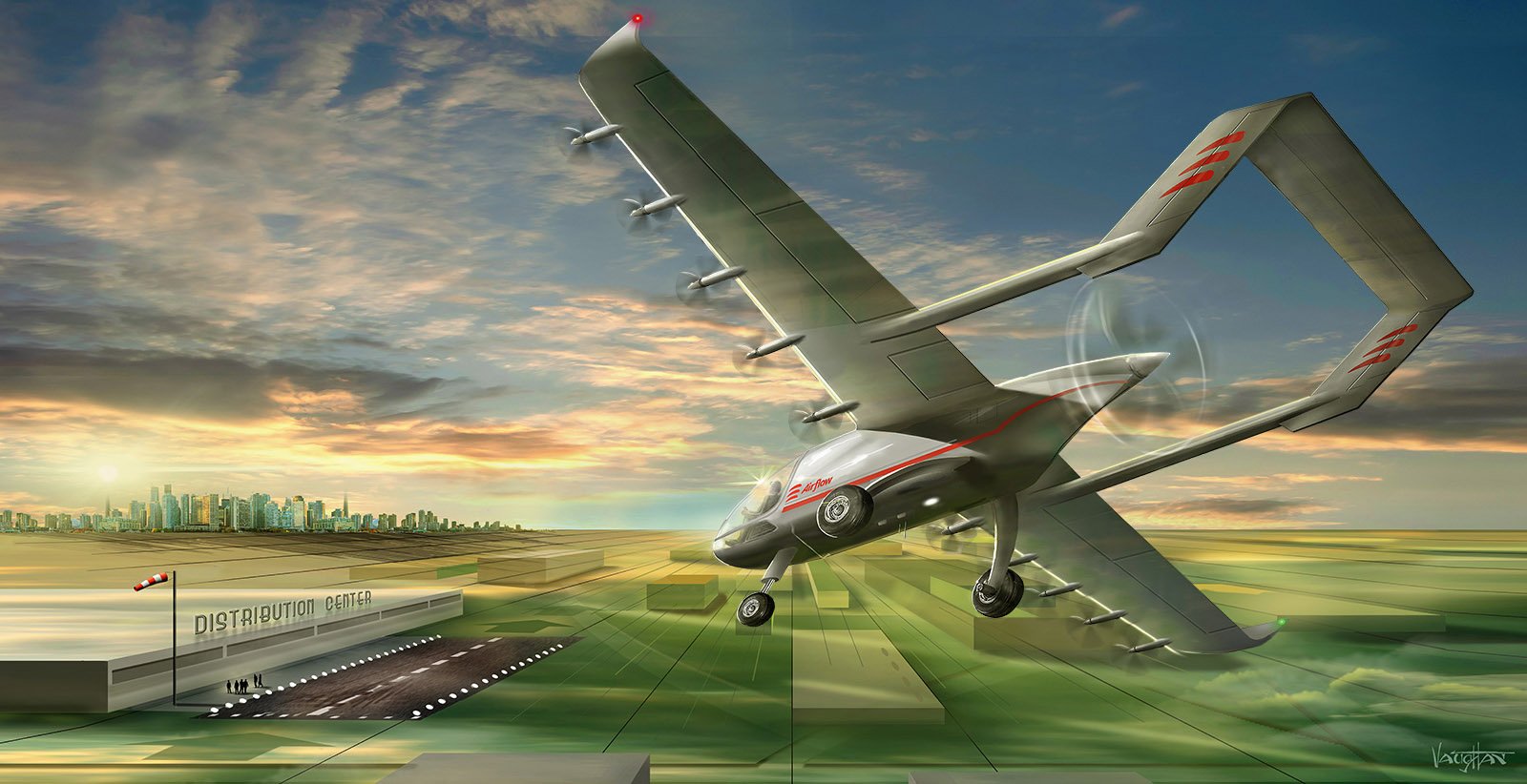Click Here to View This Page on Production Frontend
Click Here to Export Node Content
Click Here to View Printer-Friendly Version (Raw Backend)
Note: front-end display has links to styled print versions.
Content Node ID: 419168
Airflow says it has tripled the size of its order book for the eSTOL aircraft it aims to bring to market in 2025. Two months on from receiving a commitment from Ravn Alaska for 50 of the hybrid-electric Model 200, the California-based start-up announced on August 17 that it now holds letters of intent worth more than $600 million from 11 prospective customers.
Meanwhile, the company, which was founded by former members of Airbus’s Vahana eVTOL development team, has appointed former Embraer CEO Paulo Silva to its advisory board. Silva spent two decades with the Brazilian airframer and was instrumental in forming its EmbraerX technology incubator unit, from which the group’s Eve Urban Air Mobility Solutions unit established its plans to develop an eVTOL aircraft and support the wider development of the advanced air mobility ecosystem.
Based on his experience with Embraer’s regional airliners and business jets, Silva will advise Airflow on factors involved in bringing new aircraft into commercial service, including finance and marketing. “The future of aviation not only demands net-zero carbon emissions but also the ability to bring to market a much lower operating cost aircraft while meeting the needs of both passengers and operators," he commented. “The Airflow team has the right experience to effectively seize the opportunity of eSTOLs, thereby changing the face of sub-regional transportation.”
According to Airflow, the rapid escalation in provisional orders for its $2.5 million aircraft has come from extensive sales engagement with existing Part 135 commercial aircraft operators. The company has not disclosed the identities of the other 10 customers but said that each has committed to adding between 2 and 50 aircraft to their fleets.
Airflow is working on two versions of its proposed aircraft, both of which could be operated by a single pilot. One version would have eight to 10 passenger seats, a 2,000-pound payload, 500-mile range, and the ability to land and take off from just 200 feet of runway. A smaller model would have a 500-pound payload, 250-mile range, and be able to operate from a runway of only 150 feet.
VerdeGo Aero is providing its hybrid-electric powertrain for the fixed-wing aircraft. The combined propulsion system is expected to deliver a 35 percent reduction in carbon dioxide emissions compared with conventional turbine engines.
Earlier this year, the company flight-tested a subscale model to develop flight-control technology. Having completed more than 200 flights with this model, the engineering team began working on an autopilot system. It intends to use a Cessna 210 piston aircraft as a technology demonstrator.
According to Airflow, its eSTOL will be able to operate from existing airports and airfields, and also potentially from off-airport locations with suitable landing surfaces. “The interest that we’re seeing from airlines worldwide for realistic eSTOL capabilities is incredible,” said Airflow CEO Marc Ausman. “This means we’re able to offer cargo and passenger operators value from day one using today’s infrastructure, regulations, and use cases. In fact, customers will be able to expand their existing networks using our next-gen aircraft.”
